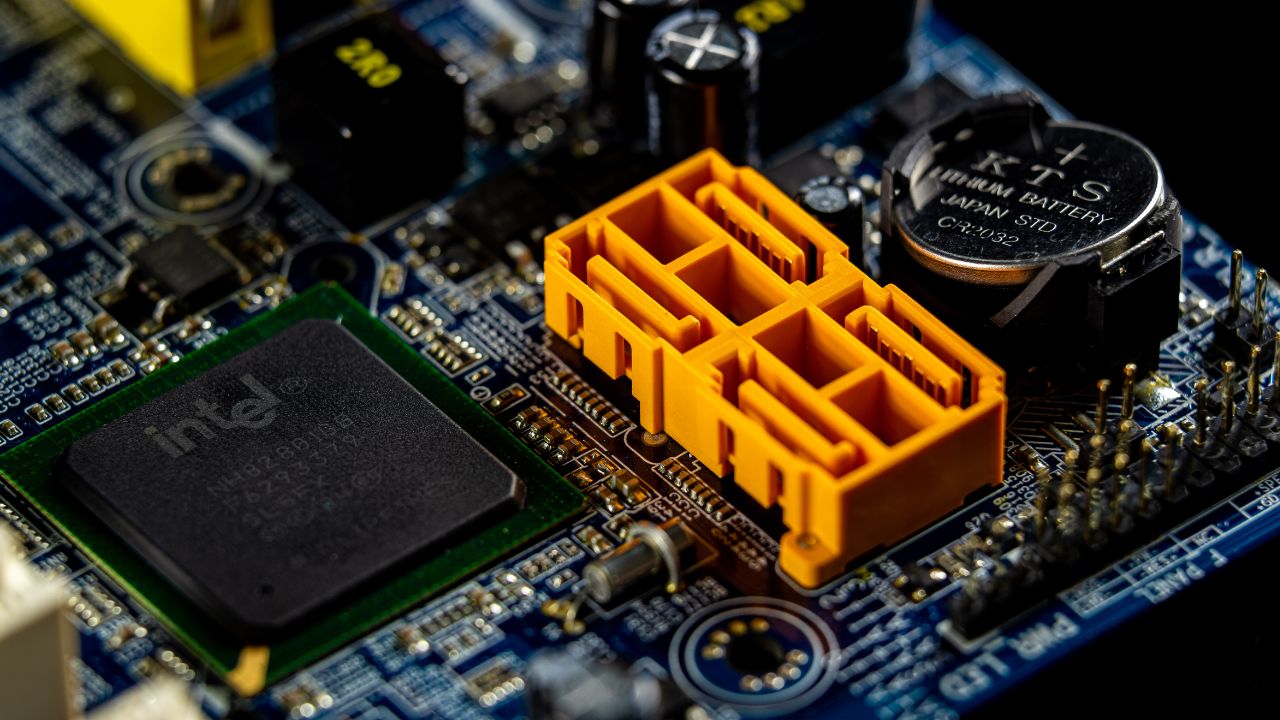The blockchain era has emerged as a progressive pressure, remodeling the way we understand and interact with the digital global.
Firstly conceived because of the underlying generation of cryptocurrency like bitcoin, blockchain has transcended its preliminary reason, influencing diverse industries and reshaping the digital landscape.
In this complete guide, we can delve into the intricacies of blockchain technology, exploring its middle principles, programs, and the profound effect it’s far making throughout diverse sectors.
What is the blockchain era?
In its middle, blockchain is a decentralized and allotted ledger technology that facts transactions throughout a community of computer systems.

The Evolution Beyond Cryptocurrencies: Various Packages of Blockchain
Whilst cryptocurrencies were the preliminary catalyst for blockchain’s recognition, the technology has swiftly improved its attain, locating packages in various industries.
1. Healthcare: The blockchain era has the potential to revolutionize healthcare by presenting a cozy and interoperable platform for dealing with patient information. Sufferers have extra managed over their health information and healthcare carriers can access unified and tamper-evidence medical records.
2. Actual estate: The actual estate industry is adopting blockchain for obvious and efficient asset transactions. Clever contracts automate the execution of actual estate agreements, lowering the need for intermediaries and minimizing the threat of fraud.
3. Intellectual belongings and copyright safety: Blockchain enables the relaxed and obvious registration of intellectual property, stopping unauthorized use or duplication. This has big implications for artists, musicians, and creators looking to protect their paintings.
Blockchain in Action: Real-Global Examples
1. Ibm food agrees with:
IBM Food agrees to make use of blockchain to enhance the traceability of meal merchandise. By recording every step within the supply chain, from farm to table, clients can verify the authenticity and starting place of the meals they purchase.
2. Ever ledger:
Everledger employs blockchain to fight fraud within the diamond enterprise. Every diamond is assigned a completely unique identifier recorded on the blockchain, ensuring that customers can hint at the diamond’s starting place and verify its authenticity.
Challenges and Future Tendencies
At the same time as blockchain holds massive ability, it isn’t without demanding situations. Scalability, regulatory uncertainty, and interoperability problems are hurdles that the technology must triumph over for massive adoption. But, ongoing research and development efforts are addressing those demanding situations.
1. Scalability:
As blockchain networks grow, scalability turns into a situation. Various answers, including sharding and layer-scaling answers, are being explored to beautify the potential of blockchain networks.
2. Interoperability:
Interoperability among exclusive blockchain networks is essential for realizing the whole ability of the technology. Efforts are underway to broaden requirements that facilitate seamless communication between diverse blockchain structures.
Why use blockchain generation?
Blockchain technology offers numerous compelling advantages that make it an attractive answer for numerous applications. Here are key motives why corporations and industries pick to apply blockchain:
1. Decentralization:
Conventional systems regularly depend on a government to manipulate and authenticate transactions. Blockchain operates on a decentralized network of computer systems, casting off the want for a government. This decentralization will increase security, reduce the risk of a single factor of failure, and promote transparency.
2. Security:
Blockchain employs superior cryptographic strategies to cozy transactions. Once a block is delivered to the chain, it’s far almost impossible to adjust the data inside it. The decentralized nature of blockchain also makes it resistant to hacking tries because an attacker might need to compromise a majority of the community to govern information.
3. Transparency and immutability:
All transactions on a blockchain are obvious and verifiable. Every participant within the community has been admitted to a complete record of transactions. Once a block is brought to the chain, it will become part of a permanent and unchangeable file. This transparency and immutability construct is accepted as true among contributors.
4. Efficiency and decreased intermediaries:
Blockchain removes the need for intermediaries in lots of transactions. Clever contracts, which can be self-executing contracts with the phrases of the settlement directly written into code, automate processes, lowering the time and price associated with guide intervention. This can lead to extra green and streamlined operations.
5. Value savings:
With the aid of lowering the reliance on intermediaries and automating strategies, blockchain can drastically reduce transaction charges. It eliminates the need for third-party verification, clearance, and settlement, making transactions quicker and greater cost-powerful.
6. Traceability and accountability:
Blockchain’s transparent and immutable nature allows traceability of belongings or transactions. This is particularly precious in delivery chain control, wherein it can be used to hint at the origin and adventure of merchandise. It additionally ensures duty as contributors are held answerable for their movements on the blockchain.
7. Better records integrity:
Because data at the blockchain is stored in blocks that can be connected through cryptographic hashes, any alteration to a block might require changing the next blocks throughout the complete chain. This makes the blockchain quite resistant to fact tampering, ensuring the integrity of stored statistics.
8. Global accessibility:
Blockchain operates on a dispensed network, making it available to members internationally. This global accessibility allows move-border transactions without the want for complicated and time-consuming approaches typically related to global transactions.
9. Clever contracts:
Smart contracts mechanically execute predefined guidelines while unique situations are met. These self-executing contracts get rid of the want for intermediaries and streamline numerous processes, from felony agreements to financial transactions.
10. Innovation and new commercial enterprise fashions:
Blockchain has the potential to pressure innovation and create new business fashions. It presents a foundation for decentralized packages and permits the development of revolutionary solutions in areas like finance, healthcare, and identity verification.

At the same time as the advantages of blockchain are vast, it’s important to renowned that the era isn’t always a one-length-suits-all solution.
The choice to apply blockchain must align with precise use cases, and cautious attention to the related challenges, inclusive of scalability, regulatory compliance, and interoperability, is important for a successful
What is the destiny of the blockchain era?
The destiny of the blockchain era holds colossal ability, with ongoing trends and improvements poised to shape numerous industries. Whilst predicting the exact trajectory is hard, several traits and opportunities offer insights into the capacity destiny directions of blockchain technology:
1. Improved integration with conventional structures:
As blockchain generation matures, we can anticipate extended integration with current structures and technologies. Hybrid solutions that integrate blockchain with conventional databases or cloud services may additionally turn out to be more established, taking into consideration a smoother transition for companies.
2. Interoperability standards:
Efforts to establish interoperability standards between exceptional blockchain networks are gaining momentum. The improvement of protocols and frameworks that facilitate communication and records exchange throughout various blockchains will enhance the general performance and utility of the era.
3. Scalability answers:
Scalability stays a full-size assignment for blockchain networks. Destiny trends may see the implementation of scaling answers consisting of sharding, layer-answer (e.g., lightning network for Bitcoin, positive rollups for Ethereum), and different techniques to grow transaction throughput and decrease congestion.
4. Full-size adoption in the supply chain:
The delivery chain enterprise is possibly to enjoy significant adoption of blockchain for improved transparency, traceability, and efficiency. Blockchain can deal with issues related to provenance, reduce fraud, and optimize supply chain processes.
5. Improvements in privateness and safety:
Endured advancements in cryptographic techniques and privacy-focused technologies (which include zero-understanding proofs) are anticipated to decorate the privacy and safety functions of blockchain networks. This is specifically critical as privacy concerns come to be more distinguished.
6. Primary bank virtual currencies:
Imperative banks globally are exploring the idea of which might be digital types of countrywide currencies built on the blockchain or distributed ledger era. The improvement and ability adoption of virtual currency ought to have a massive impact on the global economic machine.
7. Tokenization of property:
The tokenization of real-world property, consisting of actual property, art, and even highbrow assets, is possibly to increase. This process involves representing ownership of assets as virtual tokens on a blockchain, making them extra without difficulty tradable, and reachable.
8. Blockchain in healthcare:
The healthcare sector is expected to see improved integration of blockchain for comfy and interoperable health facts management. Patients might also have greater manipulation over their health statistics, leading to advanced affected person care and records integrity.
9. Blockchain in governance and vote casting:
Blockchain technology has the potential to convert governance and vote-casting structures, providing comfy and obvious strategies for elections and choice-making tactics. This could enhance the consideration of democratic tactics and decrease the chance of fraud.
10. Upward push of decentralized finance:
The defi area, which leverages blockchain to recreate conventional monetary offerings without the need for traditional intermediaries, is in all likelihood to retain development. Defi applications may also evolve and extend to consist of a broader variety of monetary services.
11. Environmental issues and sustainable answers:
Blockchain’s strength intake, especially in proof-of-work networks, has been a factor of difficulty. Future tendencies can also be cognizance of extra strength-efficient consensus mechanisms and sustainable blockchain solutions to cope with environmental issues.
12. Integration with a net of factors (IoT):
Blockchain can beautify the security and transparency of IoT ecosystems. Integration with IoT devices can also lead to more relaxed and efficient facts, allowing new opportunities for connected gadgets and decentralized programs.
As the blockchain era continues to adapt, its effect is in all likelihood to extend beyond the geographical regions of finance and cryptocurrencies, influencing how facts are managed, transactions are carried out, and considered hooked up in numerous sectors.
The destiny of blockchain holds promise for transformative changes within the digital landscape. However, it will likely be crucial to navigate demanding situations and regulatory concerns to liberate the total capacity of this innovative technology.
How does a hash assist comfy blockchain technology?
Hash features play a critical role in securing the blockchain era using offering integrity and making sure of the immutability of the information in the blockchain. Right here are several approaches wherein hashes contribute to the security of blockchain:
1. Facts integrity:
Each block in a blockchain carries a hash of the previous block. This creates a series of blocks, hence the period “blockchain.” if the records in any block are tampered with, the hash of that block changes. As an end result, all subsequent blocks’ hashes are not valid, indicating that the records have been altered. This makes it extremely tough for malicious actors to alter information in a block without changing the entire chain, supplying a tamper-proof mechanism for information integrity.
2. Block validation:
Each block commonly contains a hash of its contents. This hash serves as a completely unique identifier for the block. Nodes on the network can quickly verify the integrity of a block by recomputing its hash and comparing it to the stored hash. If the hashes are healthy, the block is considered valid.
3. Consensus mechanisms:
Hash capabilities are frequently utilized in consensus mechanisms like proof of labor (pow) and evidence of stake (pos). In pow, miners compete to remedy a cryptographic puzzle, and the primary one to resolve it gets the right to feature a brand new block to the blockchain. The solution entails finding a nonce (the variety used simplest once) that, while blended with the block’s statistics, produces a hash that meets specific criteria. This manner helps cozy the community with the aid of making it computationally high-priced to tamper with the blockchain.
4. Merkle bushes:
Blockchain often makes use of Merkle timber, which are structures of hashes, to effectively summarize and affirm massive sets of data. Each leaf node within the tree represents a piece of facts, and every non-leaf node is the hash of its children. The top-level hash, known as the Merkle root, is included inside the block header. This shape permits for green verification of the integrity of a huge set of transactions while not having to keep all the information.
5. Collision resistance:
A very good hash characteristic ought to be collision-resistant, that means it’s far computationally infeasible to find two different inputs that produce the same hash. This asset is critical for making sure the distinctiveness of block identifiers and stopping attackers from creating faux blocks with the same hash as valid ones.
The way Forward
In summary, hash functions provide a foundational layer of protection in the blockchain era with the aid of ensuring facts integrity, allowing efficient verification, and assisting consensus mechanisms that make the blockchain proof against tampering and fraud.
In the end, the blockchain era is more than a buzzword—it’s miles a transformative force reshaping industries and the virtual landscape. From its humble beginnings as the inspiration for cryptocurrencies, blockchain has developed into a versatile era with programs throughout various sectors. As technology continues to mature and overcome demanding situations, we can anticipate an even more profound impact on how we behave in transactions, percentage statistics, and build agree with inside the virtual age.
The rise of the blockchain era is not only a technological evolution; it’s miles a paradigm shift that has the potential to redefine our dating with digital belongings, information, and each other.
As we navigate this ongoing revolution, staying knowledgeable about today’s tendencies and information on the intricacies of blockchain can be essential for people and companies alike. Embody the revolution, for the blockchain era, isn’t simply converting the game—it’s rewriting the rules.
Frequently Asked Questions
What does blockchain do?
Blockchain technology is an advanced database mechanism that allows obvious statistics sharing within a commercial enterprise network. A blockchain database shops statistics in blocks that might be linked together in a sequence.
What does blockchain stand for?
Definitions of stand for. Verb. Explicit not directly through a photograph, shape, or version; be an image. Synonyms: emblematize, constitute, symbolize, signify, typify.
What are the 4 types of blockchain?
Varieties of blockchains are written below,
• Public blockchain
• Private blockchain
• Hybrid blockchain
• Consortium blockchain
What is a blockchain example?
Blockchain shop data on financial transactions and the use of cryptocurrencies, however additionally they save other types of statistics, along with product monitoring and other facts. For instance, meal products can be tracked from the moment they’re shipped out, all in the course of their journey, and up till the very last shipping.
Read also










